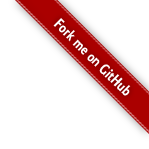 Known has a mechanism for translating text into other languages, and I’ve been working on this recently to try and make this ready for folk to begin adding translations.
Known has a mechanism for translating text into other languages, and I’ve been working on this recently to try and make this ready for folk to begin adding translations.
When Known boots, it creates a new Language() object on the Idno object for the current language, which is addressable by \Idno\Core\Idno::site()->language();. Your code/plugin can add strings to this object for later use, usually by registering them on the registerTranslations() method hook.
Adding a translation for a language
It is possible to add single strings, one by one, for the current language, however the easiest way to register multiple strings is to extend Idno/Core/Translation for each language you want to translate, and then implement its getStrings() method.
It is then possible to add them all at once for each language (this way, Known will automatically select the appropriate translation for the loaded language).
E.g.
\Idno\Core\Idno::site()->language()->register(new \IdnoPlugins\Example\Languages\English('en'));
\Idno\Core\Idno::site()->language()->register(new \IdnoPlugins\Example\Languages\French('fr'));
Using a translation
Once a string has been registered, it is possible to echo the string, and have it translated:
E.g.
echo \Idno\Core\Idno::site()->language()->_('This is the string to translate');

